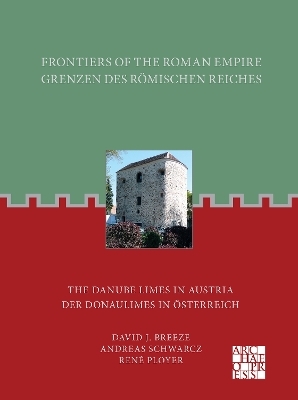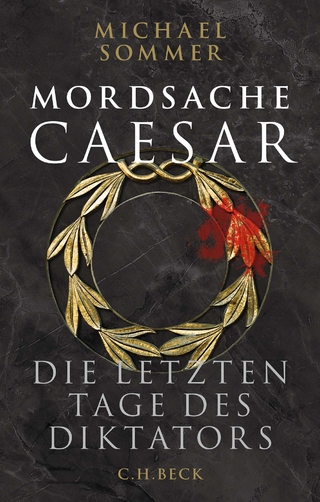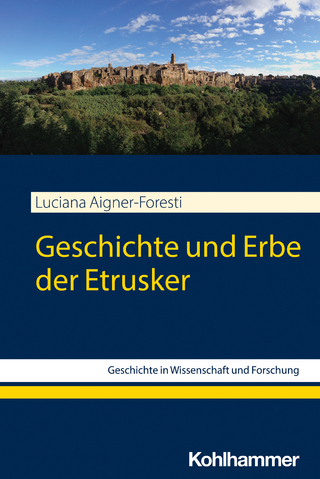
Frontiers of the Roman Empire
The Danube Limes in Austria: Grenzen Des Romischen Reiches: Der Donaulimes in Osterreich
Seiten
2023
Archaeopress (Verlag)
978-1-80327-608-3 (ISBN)
Archaeopress (Verlag)
978-1-80327-608-3 (ISBN)
Austria is particularly fortunate in the survival along the Danube of the remains of many Roman military installations. These include forts and towers, some parts surviving up to two stories high. They are a most remarkable survival and deserve to be better known and more visited.
The frontiers of the Roman empire together form the largest surviving monument of one of the world´s greatest states. They stretch for some 7,500 km through 20 countries which encircle the Mediterranean Sea. The remains of these frontiers have been studied by visitors and later archaeologists for several centuries. Many of the inscriptions and sculpture, weapons, pottery and artefacts created and used by the soldiers and civilians who lived on the frontier can be seen in museums. Equally evocative of the lost might of Rome are the physical remains of the frontiers themselves. The aim of this series of booklets is not only to inform the interested visitor about the history of the frontiers but to act as a guide-book as well.
Austria is particularly fortunate in the survival along the Danube of the remains of many military installations. These include forts and towers, some parts surviving up to two stories high. They are a most remarkable survival and deserve to be better known and more visited. I certainly hope each reader of this book will enjoy learning more about Austria’s Roman heritage.
From the Foreword by David J. Breeze.
The frontiers of the Roman empire together form the largest surviving monument of one of the world´s greatest states. They stretch for some 7,500 km through 20 countries which encircle the Mediterranean Sea. The remains of these frontiers have been studied by visitors and later archaeologists for several centuries. Many of the inscriptions and sculpture, weapons, pottery and artefacts created and used by the soldiers and civilians who lived on the frontier can be seen in museums. Equally evocative of the lost might of Rome are the physical remains of the frontiers themselves. The aim of this series of booklets is not only to inform the interested visitor about the history of the frontiers but to act as a guide-book as well.
Austria is particularly fortunate in the survival along the Danube of the remains of many military installations. These include forts and towers, some parts surviving up to two stories high. They are a most remarkable survival and deserve to be better known and more visited. I certainly hope each reader of this book will enjoy learning more about Austria’s Roman heritage.
From the Foreword by David J. Breeze.
Professor David J. Breeze has published several books on Roman frontiers and the Roman army. He is a former chairman of the International Congress of Roman Frontier Studies / hat mehrere Bücher über die römischen Grenzen und die römische Armee veröffentlicht. Er ist ehemaliger Vorsitzender des Internationalen Kongresses für Römische Grenzstudien. Professor Andreas Schwarcz is retired Professor for Medieval History and an expert on Late Roman history at the Austrian Institute for Historical Research, Vienna University / ist Professor für Geschichte des Mittelalters (i.R.) und ein Experte für spätrömische Geschichte am Institut für Österreichische Geschichtsforschung, Universität Wien.
| Erscheinungsdatum | 19.09.2023 |
|---|---|
| Verlagsort | Oxford |
| Sprache | englisch; deutsch |
| Maße | 183 x 246 mm |
| Gewicht | 331 g |
| Themenwelt | Geisteswissenschaften ► Archäologie |
| Geschichte ► Allgemeine Geschichte ► Altertum / Antike | |
| ISBN-10 | 1-80327-608-8 / 1803276088 |
| ISBN-13 | 978-1-80327-608-3 / 9781803276083 |
| Zustand | Neuware |
| Informationen gemäß Produktsicherheitsverordnung (GPSR) | |
| Haben Sie eine Frage zum Produkt? |
Mehr entdecken
aus dem Bereich
aus dem Bereich


